The following are useful resources related to developing a community onshore wind project:
Future Energy Landscapes
A pioneering approach to community engagement on local renewable energy projects which gives communities information, time and space to develop their own local energy vision. Unlock the power of community engagement with this seasoned team of planning policy, renewable energy and community engagement experts.
The Centre for Sustainable Energy‘s Future Energy Landscapes (FEL) provides an innovative bottom-up community engagement process – the outputs which emerge from communities as part of the FEL process can build social consent for developing renewables and guide local planning authorities to craft ambitious and community-aligned renewable energy policies.
It’s not just about meeting net zero goals; it’s about creating a future your community supports and directly benefits from. And it’s about ensuring the consultation process is open and accessible to everyone in society.
Ready to turn community aspirations into actionable plans? Make it happen with CSE’s Future Energy Landscapes!
Identifying suitable areas for onshore wind development
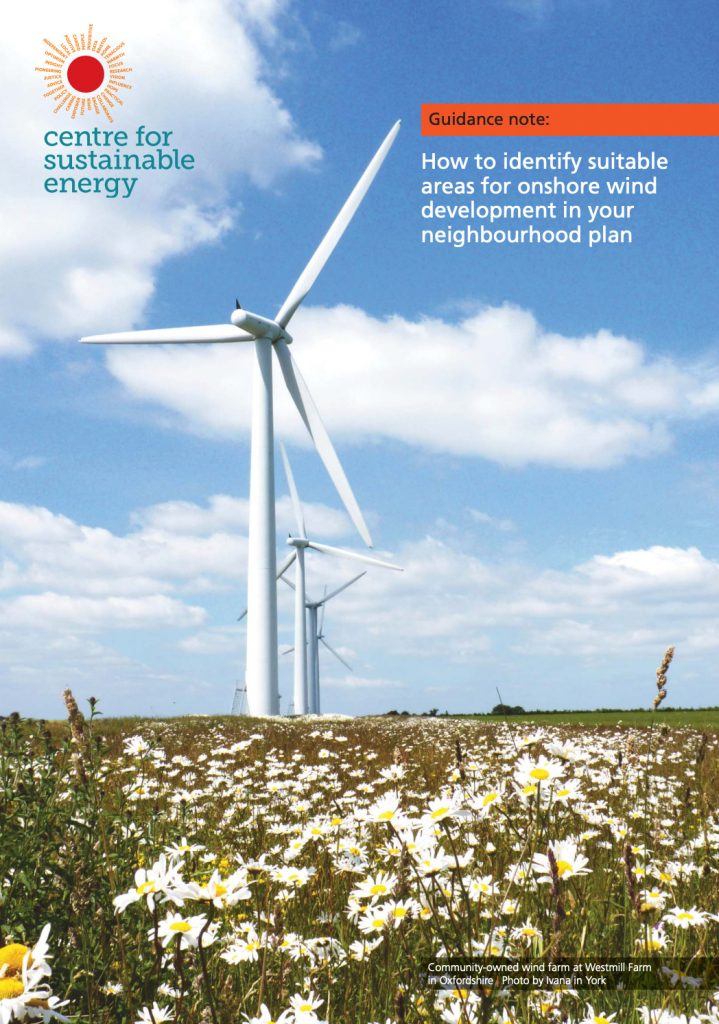
Where would wind work? This publication from the Centre for Sustainable Energy is aimed at people writing a neighbourhood plan and looking for appropriate areas to site wind turbines.
- Step-by-step guide to help community groups identify suitable areas for onshore wind development in their Neighbourhood Plan.
- Includes guidance on ‘constraints mapping’, suggestions for approaching community involvement and a recommended template for a wind policy.
Onshore Renewable Energy: Common Myths
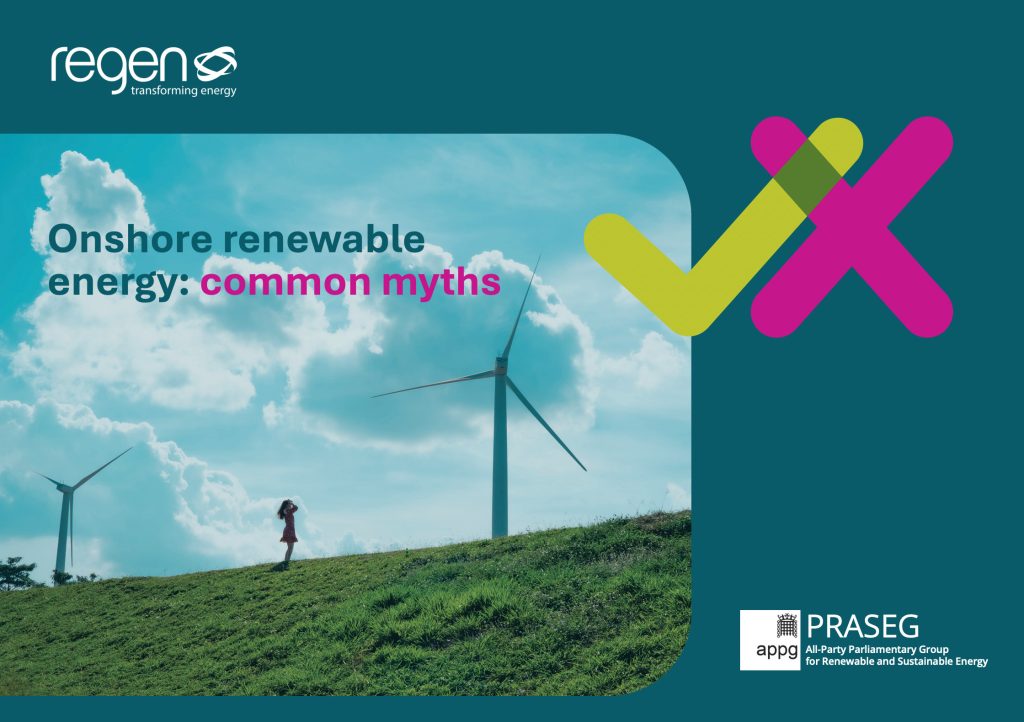
Persistent myths and misconceptions about renewables, battery storage and grid infrastructure can create unnecessary obstacles to the UK’s clean energy transition, fuelling uncertainty and public concern. To achieve our renewable energy targets at the scale and pace required, it’s essential to address these misconceptions and engage communities in ways that ensure they understand and benefit from renewable energy development.
In collaboration with the All-Party Parliamentary Group on Renewable & Sustainable Energy (PRASEG), Regen has developed a comprehensive resource to help address common myths about onshore renewables.
- This guide provides clear, evidence-based insights on issues ranging from land use to public opinion and environmental impact, equipping users to engage confidently and constructively in discussions on clean energy.
- The guide empowers readers with the facts needed to debunk misconceptions, advocate for renewable projects, and support a transition that benefits both local communities and the environment.
Wind-powered Heat: Powering clean heat with clean energy to cut costs and emissions
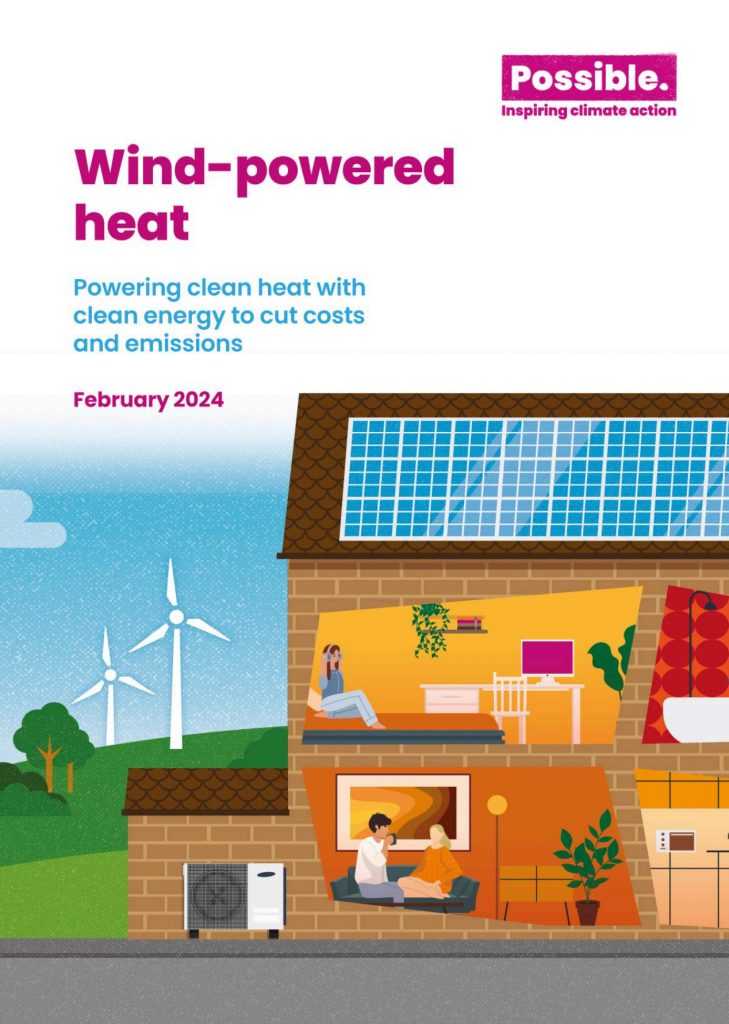
This report by Possible explores the potential for new community onshore wind projects to unlock part of the puzzle of making clean, local heat cheaper and therefore more attractive to roll out, ideally at scale.
Onshore wind is one of the cheapest energy sources available, and offers stable and predictable prices that protect consumers from the volatility and price spikes of gas. This report’s modelling of the match between wind power generation and heating demand found that wind is a good match for the electricity needed for clean heat.
Deploying heat pumps or heat networks at community scale, rather than one household at a time, has multiple benefits:
- Offers the potential for faster deployment and swifter emissions reductions.
- Offers consumers lower prices, a greater sense of confidence and more support.
- Affords local installers a more reliable supply of work.
Wind Powered Hospitals
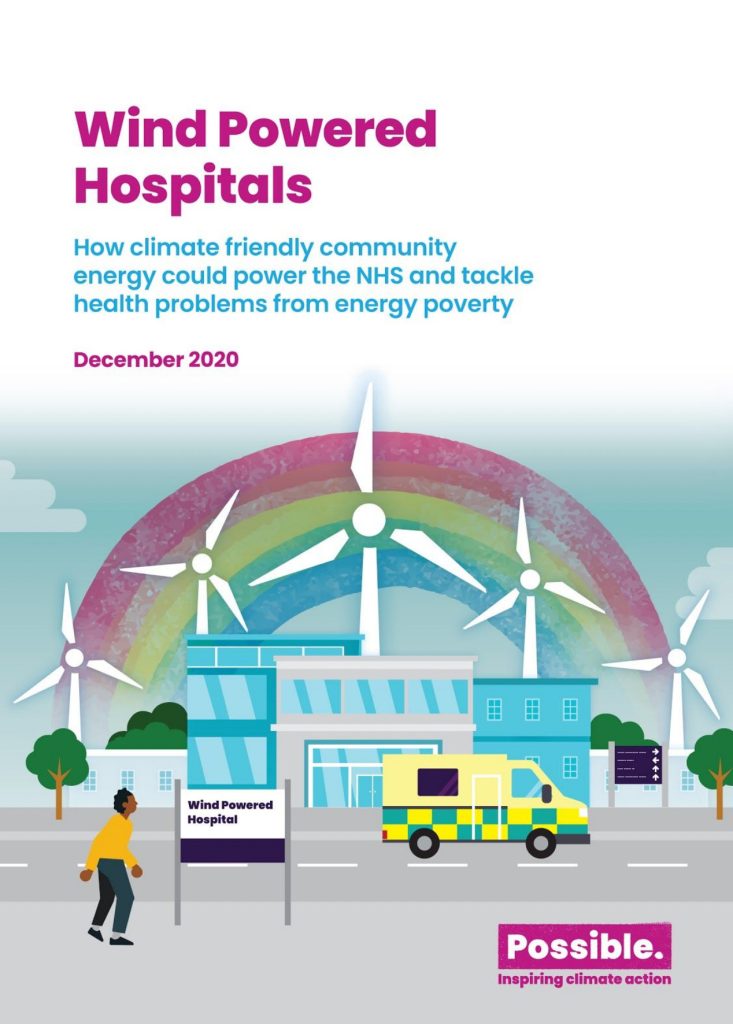
As large anchor institutions with significant purchasing power, NHS Trusts could help to accelerate emissions reductions from energy generation in the UK by deciding to commission the low carbon electricity they need from new, rather than existing, projects – supporting an increase in renewable energy capacity. Trusts could create further benefits for their local community by commissioning clean electricity from community projects which, rather than making a profit, invest their surplus income back into the local area via community benefit funds.
If surplus income from community supply were used to set up projects tackling energy poverty and cold, damp homes, it would improve the health and wellbeing of local people most in need. This in turn would reduce the costs of treating related health problems. This report by Possible explores how localities could achieve this virtuous circle of improved health, better quality of life, reduced greenhouse gas emissions and savings in healthcare costs for NHS Trusts.
Key findings:
- Annual spend on electricity per NHS Trust from community wind generates £2.6m in avoided healthcare costs over ten years through tackling cold homes.
- Equivalent to a return over 10 years of 30p in avoided healthcare costs for every pound Trusts spend on electricity at no extra cost.
- Average yearly spend of £500,000 per NHS Trust on improving cold homes – £12.5m over 25 year project lifespan.
Renewable Energy Planning Database (REPD)
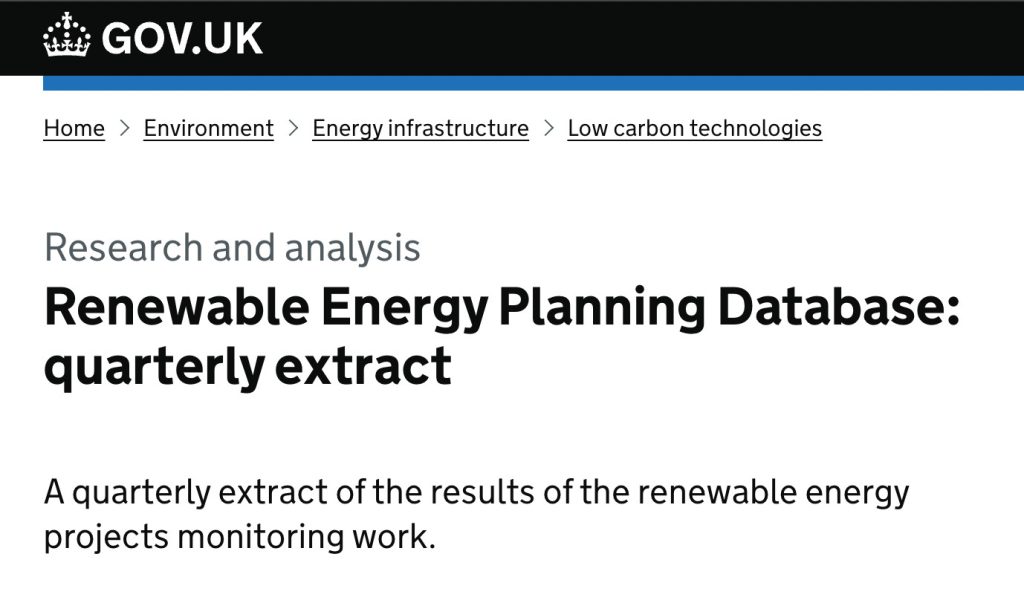
The Renewable Energy Planning Database (REPD) tracks the progress of UK renewable electricity projects over 150kW through the planning system. It provides as accurate and comprehensive a snapshot as possible of projects, and of progress across the technology sectors, through the following stages:
- inception
- planning
- construction
- operation
- decommissioning
The database is updated during the month following the end of each quarter.
WeWantWind.org
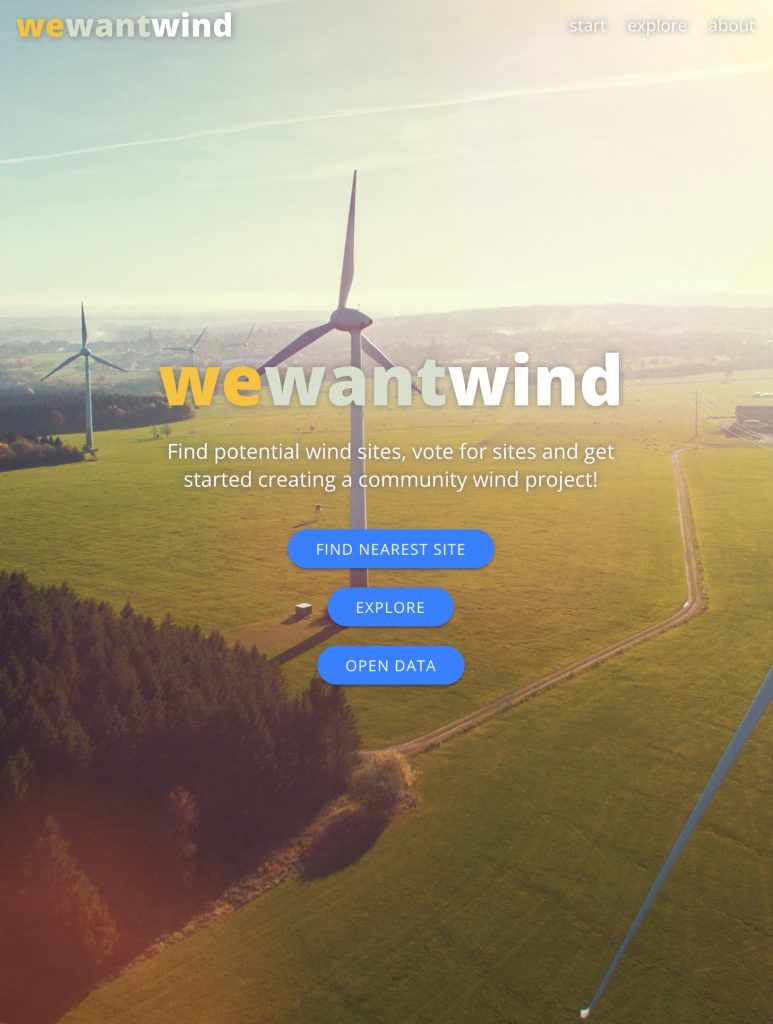
From the creators of VoteWind.org, the WeWantWind.org website allows you to find your nearest suitable wind site and view 3D visualisations of potential sites.
- Download planning constraints (as specified in CSE’s Identifying suitable areas for onshore wind development guidance, above) as Word and PDF documents.
- Record videos of 3D turbine renders.
- View visibility “viewsheds” for specific sites.
- View existing wind farms as 2D or 3D.
- View windspeeds, electricity infrastructure and wind turbine planning applications.